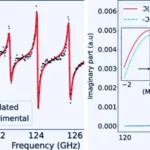Key Points
- AI Tools, AlphaFold and ESMFold, reveal hidden viral relationships of the flavivirus family through protein structure prediction.
- Analyzed over 33,000 protein structures from 458 flavivirus species. Hepatitis C and pestiviruses share similar entry systems, which were previously unknown.
- Some viruses may have acquired bacterial enzymes, reshaping viral evolution.
- AI is expected to revise the evolutionary histories of many organisms.
Artificial intelligence (AI) is reshaping the understanding of viral evolution by analyzing protein structures, leading to surprising discoveries about the connections between various viruses. Predicted protein structures generated by DeepMind’s AlphaFold and Meta’s ESMFold have helped researchers uncover hidden links within the flavivirus family, which includes human pathogens such as hepatitis C, dengue, and Zika viruses, as well as emerging animal threats.
Traditionally, scientists have relied on genome comparisons to trace viral evolution. However, RNA viruses’ rapid mutation rates and ability to acquire genetic material from other organisms often obscure deeper evolutionary relationships. In contrast, viral protein structures change more slowly, offering a clearer picture of viral evolution. Until now, large-scale comparisons of these structures across entire virus families have not been feasible.
A recent study published in Nature by Joe Grove, a molecular virologist at the University of Glasgow, demonstrates how AI tools like AlphaFold can predict protein structures across the flavivirus family. Grove’s team generated over 33,000 predicted protein structures from 458 flavivirus species using AlphaFold and ESMFold. The latter, a language-based model developed by Meta, requires only a single protein sequence for analysis, making it especially useful for studying less understood viruses.
One major discovery was the identification of viral entry proteins responsible for infecting host cells, which had previously been difficult to trace due to divergent genetic sequences. The study found unexpected links between the entry systems of hepatitis C and pestiviruses, a group of viruses affecting animals like pigs. Researchers also discovered that Zika and dengue viruses share protein origins with larger, lesser-known flaviviruses like the Haseki tick virus.
In a surprising twist, the study revealed that some flaviviruses have enzymes likely stolen from bacteria, suggesting that genetic piracy played a significant role in viral evolution. Researchers believe this AI-driven approach could rewrite the evolutionary histories of other viruses and cellular organisms, offering new insights into their origins and development.










